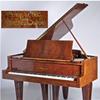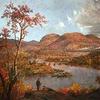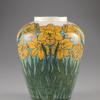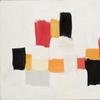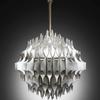Featured 19th Century Painter: EMILE GRUPPÉ
- February 11, 2021 13:33
Plein-air artist Emile Gruppé was born in Rochester New York. He spent his childhood in Katwijk aan Zee in the province of South Holland, Netherlands where his father, landscape and marine painter Charles Paulo Gruppé, painted with The Hague School. Prior to the outbreak of World War I, the family returned to the United States; however, Emile Gruppé did not escape the war—he was in the United States Navy in 1917. His art career began in earnest after the war. Gruppe studied at the Students League with George Bridgman and Charles Chapman; the National Academy of Design; and the Academy de la Grande Chaumiere (Paris, France) with Richard Emil Miller, not to mention training received from his father and the artists of The Hague School. He also received instruction from John F. Carlson of the John F. Carlson School of Landscape Painting at Woodstock, New York, and Charles Webster Hawthorne at the Cape Cod School of Art in Provincetown, Massachusetts. He first visited Rockport, Massachusetts on Cape Ann in 1925; however, his final home was Rocky Neck, at East Gloucester. In 1940 he opened The Gloucester School of Painting, which closed only after his death in 1978. In 1942, He and Carlson founded the Gruppé Summer School in Gloucester, Massachusetts. In the late 1930s, he began spending winters painting in Jeffersonville, Vermont and in later years, his winters were spent in Florida. Not only a teacher, but late in his life, he authored three books, Brushwork for the Oil Painter (1977), Gruppé on Painting (1979) and Gruppé on Color (1979). Gruppé is best known for his harbor scenes of Gloucester; however, he painted Vermont winter landscapes, where birch figured prominently, and the sunny beaches of Naples Florida. He adopted a Tonalist style early in his career, likely a result of his exposure to the artists of The Hague School, which was influenced by the French Barbizon painters. His later works were impressionistic in style using a higher-toned palette and thick paint applied with robust brushwork. Gruppé was a member of numerous art organizations and exhibited at many including the Allied Artists of America (award, 1944); Woodstock Art Association; the Connecticut Academy of Fine Arts; the North Shore Art Association (Gloucester); the Gloucester Society of Artists; the Rochester Art Association; the Sarasota Art Association (Florida); the St. Augustine Art Association (Florida); the Salmagundi Club (New York); Rockport Art Association (awards 1956, 1957); Grand Central Art Galleries (New York); Audubon Artists (New York); Northern Vermont Artists Association; New Haven Paint & Clay Club (awards 1935, 1938, 1939, 1940); Connecticut Academy of Fine Arts (award 1956); Arts & Crafts Association of Meriden (Connecticut; awards 1939, 1946); Vose Galleries (Boston); Art Institute of Chicago; and the Academic Artists (Springfield, Massachusetts). He received other awards from exhibitions in Springville, Utah (1928, 1942); Guilford, CT (1939); Bridgeport, Connecticut Art Association (award 1940); Jordan Marsh Exhibition (Boston, Richard Mitton Award 1943); and the Champlain Valley Exposition (Vermont, 1949).






